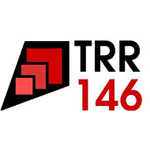
Seminar über Theorie der kondensierten Materie / TRR146 Seminar
Jan. 28, 2016 at
10:30 a.m.
in
Medienraum, 3rd floor, Staudingerweg 7
F. Schmid
friederike.schmid@uni-mainz.de
P. Virnau
virnau@uni-mainz.de
L. Stelzl
lstelzl@uni-mainz.de
Simulations of Thermodynamic Properties and Self-Assembly in Aqueous Solutions
Prof. Panagiotopoulos (Princeton University)
Aqueous electrolyte solutions play an important role in industrial, geochemical and biological applications. The mean ionic activity coefficients quantify the deviation of salt chemical potential from ideal solution behavior; experimental measurements are available for many salts over broad ranges of concentration and temperature, but there have been practically no prior simulation results, because if sampling difficulties for explicit-solvent electrolyte solutions. We have developed a new approach for determination of activity coefficients of aqueous electrolytes [1]. Common fixed-point-charge models for water and ions were found to be unable to reproduce simultaneously activity coefficients and solubilities. Polarizable models perform better, but still predict an incorrect temperature dependence of these properties [2]. These shortcomings are also evident when determining critical micelle concentrations in solutions of ionic surfactants [3].
1. Z. Mester and A. Z. Panagiotopoulos “Mean ionic activity coefficients in aqueous NaCl solutions from molecular dynamics simulations" J. Chem. Phys. 142: 044507, 10 pp (2015). http://dx.doi.org/10.1063/1.4906320
2. H. Jiang, Z. Mester, O. A. Moultos, I. G. Economou, and A. Z. Panagiotopoulos, "Thermodynamic and Transport Properties of H2O+NaCl from Polarizable Force Fields," J. Chem. Theory Comput. 11: 3802-3810 (2015). http://pubs.acs.org/doi/abs/10.1021/acs.jctc.5b00421
3. A. Jusufi and A. Z. Panagiotopoulos, "Explicit- and Implicit-Solvent Simulations of Micellization in Surfactant Solutions”, Langmuir, 31: 3283-92 (2015). http://pubs.acs.org/doi/abs/10.1021/la502227v